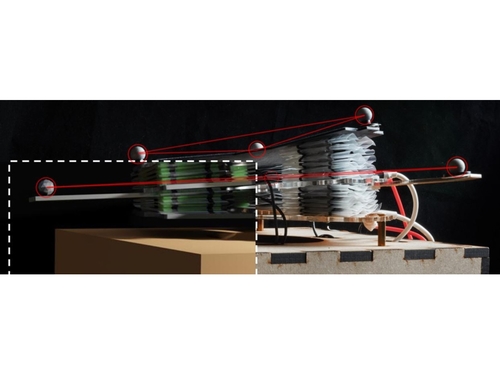2022
Hainsworth, T., Schmidt, I., Sundaram, V., Whiting, G. L., Keplinger, C., MacCurdy, R.
Simulating Electrohydraulic Soft Actuator Assemblies Via Reduced Order Modeling
SOFT ROBOTICS. IEEE INTERNATIONAL CONFERENCE. 5TH 2022. (RoboSoft 2022), pages: 21-28, Institute of Electrical and Electronics Engineers (IEEE), 2022 IEEE 5th International Conference on Soft Robotics (RoboSoft), April 2022 (conference)
2021
Purnendu, , Novack, S., Acome, E., Alistar, M., Keplinger, C., Gross, M. D., Bruns, C., Leithinger, D.
Electriflow: Augmenting Books With Tangible Animation Using Soft Electrohydraulic Actuators
In SIGGRAPH ’21: ACM SIGGRAPH 2021 Labs, pages: 8, ACM, New York, NY, Special Interest Group on Computer Graphics and Interactive Techniques Conference (SIGGRAPH 2021), July 2021 (inproceedings)
Purnendu, , Acome, E., Keplinger, C., Gross, M. D., Bruns, C., Leithinger, D.
Soft Electrohydraulic Actuators for Origami Inspired Shape-Changing Interfaces
In CHI EA ’21: Extended Abstracts of the 2021 CHI Conference on Human Factors in Computing Systems, pages: 377, ACM, New York, NY, Conference on Human Factors in Computing Systems (CHI 2021), May 2021 (inproceedings)


